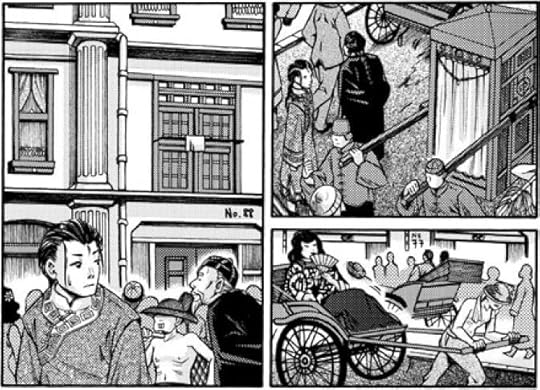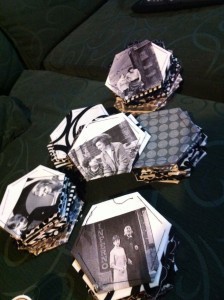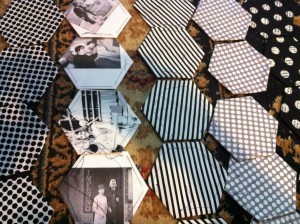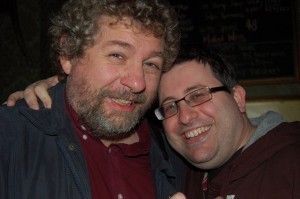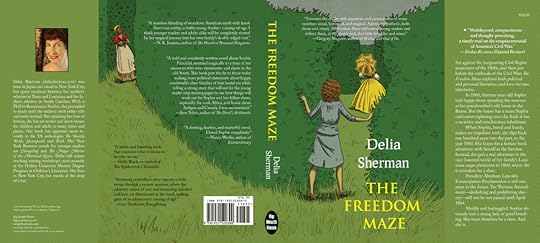Tansy Rayner Roberts's Blog, page 111
June 4, 2012
Snapshot 2012: Kylie Chan
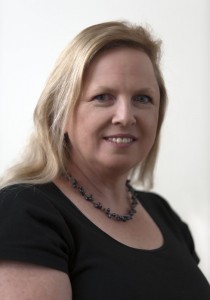 Kylie Chan married a Hong Kong national in a traditional Chinese wedding ceremony in Eastern China, lived in Australia for ten years, then moved to Hong Kong for ten years and during that time learnt a great deal about Chinese culture and came to appreciate the customs and way of life.
Kylie Chan married a Hong Kong national in a traditional Chinese wedding ceremony in Eastern China, lived in Australia for ten years, then moved to Hong Kong for ten years and during that time learnt a great deal about Chinese culture and came to appreciate the customs and way of life.
In 2003 she closed down her successful IT consultancy company in Hong Kong and moved back to Australia. She used her knowledge of Chinese mythology, culture, and martial arts to weave a story that would appeal to a wide audience.
Since returning to Australia, Kylie has studied Kung Fu (Wing Chun and Southern Chow Clan styles) as well as Tai Chi and is now a senior belt in both forms. She has also made an intensive study of Buddhist and Taoist philosophy and has brought all of these together into her storytelling. She is a guest lecturer at the University of Queensland on Research for Writing. Kylie is a mother of two who lives in Brisbane, and her website is at www.kyliechan.com.
Check out Kylie’s previous snapshots in 2007 and 2010.
1. Your Journey to Wudang trilogy (follow up to the Dark Heavens trilogy) has been released over the last couple of years, and is shortly to appear in the US and UK. What were some of the challenges that came with this trilogy, compared to your first? What are you most proud of about it?
When I wrote the first trilogy, I had all the time in the world to rewrite, edit and polish. It wasn’t until I’d finished the first three that Harper-Collins offered me the contract. The first trilogy did very well – and with the success, my (wonderful) publishers were eager to have more books. This meant that they were impatiently waiting for the second series and I had a (oh no!) deadline. This was a new experience, for the first time I had people waiting for my books and I absolutely had to have the words on the page.
Personally I went into a bad place about the time I was writing the first book of the second trilogy – Earth to Hell. I was effectively a single mum working two jobs and finding time to be creatively excellent – or even just good enough – was very difficult. The book took nearly two years for me to produce, with the publishers continually asking (extremely nicely) when it would be done. At the same time, the first trilogy had picked up more and more readers, fans started emailing me wanting the next book, and I had more pressure.
I sorted out my private life and focussed on producing the second trilogy, picked myself up and worked hard to get it done. I threw away the first third of the book and then things really started to move. Starting ‘Earth to Hell’ without two of the main characters was something of a challenge but I’m proud that I haven’t run out of story to tell and that it’s still thundering along well into the seventh, ‘Glass Citadel’, which is nearly finished and (hopefully) just as good as the other six.
2. I was really excited to hear about your collaboration with Queenie Chan on a graphic novel, ‘Small Shen,’ to be released later this year. What can we expect from this book, and how does it tie into your other work?
This is really exciting for me too! I’ve seen the artwork and Queenie is a genius. She’s captured the ‘feel’ of Ming/Qing China so meticulously and her lavish and detailed illustrations are breathtaking.
The book will be a hybrid text/graphic novel, and sits firmly in the timeline as a prequel to ‘White Tiger’, finishing just before the beginning of the main story arc. We take one of the minor characters, a small Shen called Gold, and start his story in 1720, showing his history and how he (and his colleague Jade) came to be in their situation in the twentieth and twenty-first centuries. Although it’s a prequel the story will completely stand alone, so anyone who hasn’t read any of the other books will still be able to experience the full depth of the story.
Words really cannot do justice to just how beautiful this book will be. Queenie’s taken my story and added a visual dimension that is awe-inspiring. We’re looking at having Small Shen out on the shelves just before Christmas this year and I seriously cannot wait.
Snapshot note: since completing this interview, Kylie sent me this sneak peek of what Queenie’s beautiful art will look like in the book.
3. And a third trilogy on the way too! You’re writing this one right now, but what can you tell us about it?
Ask any member of my family and they’ll tell you I talk too much, particularly when I have a captive audience. And the third trilogy is more of this – me talking, telling this massive story that’s really more of a single series than a collection of trilogies. I don’t think of them as trilogies myself, I talk about working on ‘Book Seven’ which is what the current one is for me.
I’m well aware of the fact that I’ve been driving my readers completely nuts with hints and suggestions of mysteries all through the first six books that I’ve been slowly explaining and clarifying as the stories have moved along. In book seven – oh, sorry, that’s ‘Glass Citadel’, book one of the third trilogy, the ‘Celestial Battle’ trilogy – I delve very deeply into the history behind my main character’s strange and complex nature.
Many things about her past and what happened in the West are explored, my main character finds some uncomfortable truths about herself, and the menace ramps up as the assault on Heaven takes a new and disturbing direction.
I hope my readers like it.
4. What Australian works have you loved recently?
I freely admit that I have the attention span of a mayfly – I grew up in the eighties on a saturated diet of junk television, so I’ve seen just about every plot so many times that I annoy my family by loudly voicing predictable scripts even before the actors mouth the words. To this day detective stories bore me silly, because that’s what was on the TV every single night – that and soap operas. (Dallas, anyone?)
I don’t have the patience to sit through a long book of carefully plotted plodding characters going from point A to point B with the occasional bit of pointless conflict along the way to give it ‘conflict’, then reach point B and (of course) inevitably defeat the Bad Guy. I think that’s what makes Game of Thrones so riveting for everybody – GRRM broke all the ‘point A to B’ rules with that one.
A book really has to be something completely special to impress me, There are two really fine speculative fiction series that I’ve read lately that I’ve just been glued to. It’s probably a valid point that neither of these series has the standard current fare of vampires/werewolves/zombies that are so popular right now, and I can’t help but find more than a little boring.
The first is Tansy Rayner Roberts’ Creature Court trilogy – full of blood, sex, and violence in the nicest sort of way. The characters are strong and realistic and the story is gripping. The other is Trent Jamieson’s Death Works trilogy. Set in Brisbane (yay!) it’s a wonderful free-wheeling joyride that runs the full range from witty humour to dark horror without skipping a beat in between. The main character is delightfully average and the locations are wonderful.
5. Two years on from Aussiecon 4, (and the last Snapshot) what do you think are some of the biggest changes to the Australian Spec Fic scene, or publishing as a whole?
The rise of the e-book, definitely, and with it the tidal wave of online self-publishing. This has allowed everybody with a story to tell to share it with the world, and produced some wonderful success stories. The limits of traditional bookstores have been broken down, and a reader can scan to purchase fiction or choose to read something provided for free by a self-published author wanting to gain an audience. If this author is very good, they will gain an audience, and attention, and this can only be a good thing.
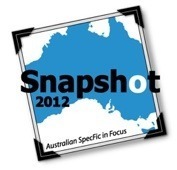 This interview was conducted as part of the 2012 Aussie Spec Fic Snapshot. In the lead up to Continuum 8 in Melbourne, we will be blogging interviews for Snapshot 2012 conducted by Alisa Krasnostein, Kathryn Linge, David McDonald, Helen Merrick, Ian Mond, Jason Nahrung, Alex Pierce, Tansy Rayner Roberts, Tehani Wessely and Sean Wright. To read the interviews hot off the press, check these blogs daily from June 1 to June 7, 2012.
This interview was conducted as part of the 2012 Aussie Spec Fic Snapshot. In the lead up to Continuum 8 in Melbourne, we will be blogging interviews for Snapshot 2012 conducted by Alisa Krasnostein, Kathryn Linge, David McDonald, Helen Merrick, Ian Mond, Jason Nahrung, Alex Pierce, Tansy Rayner Roberts, Tehani Wessely and Sean Wright. To read the interviews hot off the press, check these blogs daily from June 1 to June 7, 2012.
You can find the past three Snapshots at the following links: 2005, 2007 and 2010
June 3, 2012
The Craftonomicon Quilt!
So this year’s Natcon has a crafty theme, and that set me thinking. Paper piecing is one of my favourite kinds of patchwork and it occurred to me that if I prepared a bunch of pieces, and didn’t let myself sew any of them together until the beginning of the con, I could see how far I could get over the whole weekend. Sure, I might get distracted and end up with the world’s smallest quilt, but what is there to lose?
After all, sewing and talking go together like bread and jam, and if there’s one thing I can guarantee about this coming weekend, it’s that I’m going to be talking my head off.
So what would be the perfect themed quilt to work on at an SF convention?
How about my Black and White 1960′s Doctor Who Hexagon Quilt?
Hexagons are the classic paper piecing shape, and also happen to be evocative of the TARDIS console. I have been collecting moddish black and white and silver quilting cottons for ages including a lot of roundel-shaped polka dots (I also have several colorful sets that will work for my Psychedelic 1970′s Doctor Who Strip Quilt some day). Oh yes and I have the technology to print stills of favourite 1960′s Doctor Who episodes on to quilting cotton.
I’ve tacked fabric to nearly 100 card hexagons. I have quilting thread and a new pack of needles. Let’s do this thing, baby!
[I've discussed my thinking behind this quilt in much greater depth over at Doctor Her: Crafty Doctor Who - Subversion Through Patchwork]
Snapshot 2012: Ian Mond
Ian Mond is notable for being one of the last of the great Jewish podcasters (cf Josh Kinal, Alisa Krasnostein). His solo podcasts Writer and the Critic and Shooting The Poo not only demonstrate a breadth of knowledge on a vast array of subjects, but also an astonishing vocal flexibility – who knew that Kirstyn McDermott, Mitch and Dave Hoskin were just facets of Mond’s personality.
pictured on the right with unknown crazy person
He also wrote a couple of Doctor Who and Bernice Summerfield short stories, but no-one talks about them much.1. The Writer and the Critic has become an integral part of the Aussie spec fic scene very fast – and you don’t even talk about spec fic books all the time! What does podcasting offer you, as a social medium or a creative one?
Thanks, it’s nice to feel integral.
As a social medium podcasting provides me with an excuse to catch up with Kirstyn every month. Which I know sounds like I don’t make enough time for my friends – but, well, that’s actually the truth.
I’ve also enjoyed the twitter exchanges directly following a podcast, usually involving Cheryl Morgan, Charles Tan and Jonathan Strahan (in the case of Jonathan it’s usually bemoaning how long the podcast is). The chat on the twitters makes the podcast feel alive and organic and part of a real time dialogue between us and the people who listen.
From a creative perspective, well it might be laziness on my part, but I’ve discovered that I love talking about books rather than writing reviews about them. And if you’re talking about a book with someone whose intelligent (and possibly smarter than you) then it just makes the experience all the more interesting and thought provoking.
2. You’re now a part of the Last Short Story crew – how has reading so much international short fiction changed your perspective on the SF scene?
I’m not sure it has. That’s because I’m not sure I had a specific perspective or prejudice when I started reading for LSS. That said, if I did have one expectation going in, it was expecting to hate a whole bunch of stories. But what I’ve discovered is that while the truly brilliant story is a rare thing, most of the fiction I read last year and this year is at the very least mildly entertaining and competently written. Yeah, I know that’s damning with the faintest of praise, but I did expect there to be far more stories I’d be unable to finish. And that’s not been the case.
Also, I think I’m in love with Ken Liu.
3. Writers tend to get most of the attention in the spec fic scene, unless there’s a flame war going on… what are your goals as a critic? What would you most like to achieve over the next couple of years?
That’s so true about critics only getting noticed, flame war style, if they say something controversial or rude about a book. Even the best critics out there – a number of whom you’ll find on Strange Horizons – get very few comments.
At the moment, I’m pretty content with voicing my literary /genre opinions on The Writer and the Critic and the Last Short Story blog. At some point, when I have some time and am able to read more books then just those for the podcast, I may go back to actually writing reviews again. Actually, I have been thinking of dropping out of LSS in 2014 (sorry guys… ) and spending that year just reading and reviewing novels of all stripes and persuasions.
But we shall see.
4. What Australian works have you loved recently?
The Couriers New Bicycle by Kim Westwood is fantastic, both for its gender politics and its dystopian Melbourne. It’s also the sort of book that needs be taught in schools across the world.
Bad Power by Deb Biancotti made me wish she had a novel out set in the same world. Actually, any novel by her will do.
Bluegrass Symphony by Lisa Hannett. I did a happy dance when I saw that Lisa had won two Aurealis awards a week or so back. I also think the collection – and not a single dud story to be found – deserved more Ditmar-love.
Sea Hearts by Margo Lanagan. This book is going to be cropping up on a whole lot of awards lists next year and deservedly so. It should also win a bunch of those awards.
5. Two years on from Aussiecon 4, (and the last Snapshot) what do you think are some of the biggest changes to the Australian Spec Fic scene?
Two words: gender recognition. Not parity. Not equality. But recognition. In my opinion these last two years have seen Australian fandom and genre literature lead the way in terms of recognizing the substantial role female writers, publishers and administrators play in the local scene. And this has been emphasized in the recent Ditmar and Aurealis award ballots.
Arguably this recognition started before Aussiecon 4, but it’s definitely been cemented in the last two years. And may it continue.
 This interview was conducted as part of the 2012 Aussie Spec Fic Snapshot. In the lead up to Continuum 8 in Melbourne, we will be blogging interviews for Snapshot 2012 conducted by Alisa Krasnostein, Kathryn Linge, David McDonald, Helen Merrick, Ian Mond, Jason Nahrung, Alex Pierce, Tansy Rayner Roberts, Tehani Wessely and Sean Wright. To read the interviews hot off the press, check these blogs daily from June 1 to June 7, 2012.
This interview was conducted as part of the 2012 Aussie Spec Fic Snapshot. In the lead up to Continuum 8 in Melbourne, we will be blogging interviews for Snapshot 2012 conducted by Alisa Krasnostein, Kathryn Linge, David McDonald, Helen Merrick, Ian Mond, Jason Nahrung, Alex Pierce, Tansy Rayner Roberts, Tehani Wessely and Sean Wright. To read the interviews hot off the press, check these blogs daily from June 1 to June 7, 2012.
You can find the past three Snapshots at the following links: 2005, 2007 and 2010
Craftonomicon/Continuum/Natcon or Bust!
I’m off gallivanting again next weekend, which is very exciting – the Silent Producer and I are leaving our girls behind with my Mum and jetting off to sunny Melbourne for the Natcon, AKA Continuum, AKA CRAFTONOMICON. It’s going to be awesome!
The program seems to have firmed up, so here is what I’ll be up to over the convention:
FRIDAY
16:00 – Crafty Characters, with Trudi Canavan, Tansy Rayner Roberts & Jo Spurrier. (Drummond Room)
“We take a look at craftspeople in speculative fiction, the stereotypes, and what crafts have been overlooked.”
19:00 - The Twelfth Planet Press Hour – Alisa Krasnostein, Jason Nahrung, Narrelle Harris
Sure I’m not technically on the program, but Alisa would kill me if I wasn’t there and also Terri is designing Twelfth Planet cupcakes. Be there or be cakeless!
SATURDAY
14:00 – Galactic Suburbia Live! – Alisa, Alex & Tansy in Melbourne (Lincoln Room)
“The latest episode of the cult podcasting series, recorded live! Alisa, Alex and Tansy bring you speculative fiction news, reading notes and chat from the galactic suburbs of Australia.” (we’re a cult!)
15:00 – Playing God – a Guide for Beginners – Trudi Canavan, Louise Cusack, Alison Goodman, Michael Pryor, Tansy Rayner Roberts (Argyle Room)
“Building a new world for your fiction can be fun and exciting. But where do you start, what should you avoid and what makes it a living, breathing, believable world?”
SUNDAY
11:00 - Crafts in Space – Trudi Canavan, Lyn McConchie, Sarah Lee Parker, Tansy Rayner Roberts (Drummond Room and have you noticed yet that Trudi and I are totally stalking each other at this convention?)
“Fantasy seems to be littered with all kinds of craft-doers but it’s rare in science fiction. Why is this? What materials could you make craft out of? What effects would low gravity have? Which technologies would be awesome to use? Our crafty panellists discuss all this and more!”
14:00 – Readings – (14:00) Kelly Link (14.15) Jenny Blackford (14.30) Tansy Rayner Roberts (14.45) Alan Baxter
Reading after Kelly Link, not intimidating at all! I will probably be reading from “Julia Agrippina’s Secret Family Bestiary” in Love and Romanpunk as this is my favourite piece to read from right now. But will decide on the day!
16:00 – Where Are All the Wonder Women? – Russell Blackford, Alice Clarke, Tansy Rayner Roberts, Grant Watson (Pelham Room)
“There’s no shortage of female superheroes (or villains!), but few have attained the iconic status of, say, Wonder Woman. Why is this? Which characters deserve better? A discussion of female representation in comics.”
and of course I shall attend…
20:00 – AWARDS CEREMONY
Your hosts, Kirstyn McDermott and Ian Mond, will be overseeing the 51st Australian National SF Convention Awards, including the A Bertram Chandler, the Peter McNamara, the Norma K Hemming, and the Chronos and Ditmar awards.
Ooh, the Chandler! Someone’s getting a plate! I love awards & many of my favourite people will be there on the night. I was delighted to hear that Kirstyn & Mondy are hosting, I expect many antics that will get them snapped up for next year’s Logies. Might we see the pointy stick in person???
In and amongst all of this scheduled wonder, I have a plot afoot to work on a real live SF Craft Project while chatting to my friends & possible even while presenting on panels. To be revealed… in a later blog post. Bwa ha ha!
Snapshot 2012: Rhonda Roberts
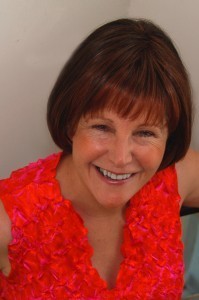 Rhonda Roberts has a PhD and worked as an academic studying the formation of knowledge systems in different cultures and historical periods, especially in Japan, the USA and Australia. She trained in Akido in Japan and now learns Chinese sword near her home in the Illawarra.
Rhonda Roberts has a PhD and worked as an academic studying the formation of knowledge systems in different cultures and historical periods, especially in Japan, the USA and Australia. She trained in Akido in Japan and now learns Chinese sword near her home in the Illawarra.
Check out Rhonda’s interview in the 2010 Snapshot.
1. The second book in your Kannon Dupree series, Hoodwink, was released earlier this year, and takes your time travelling detective to 1930’s Hollywood and specifically to the set of Gone With the Wind. What is it about this particular place and time that appealed to you?
Multiple reasons. Firstly, I wanted to write about a murder on a film set and 1939 is the most glamorous year in the Golden Years of Hollywood. And, of course, I had to choose Gone With The Wind. For sheer breadth of drama, scandal and controversy, it’s a writer’s dream. After doing my research I had no idea why there weren’t several murders on the film set. (If I’d been forced to work there, there probably would’ve been!)
The producer, David O Selznick, was said to be a slave driver addicted to Benzedrine, who went through multiple directors to make the film – one of whom was driven to the brink of suicide. Most of the cast was hiding outrageous secrets, ranging from simple old adultery through to operating as a spy in pre-war America. And that’s just for starters…
On top of that the film itself is a paradox. GWTW is about the American Civil War and by today’s standards is extremely racist, but still considered a masterpiece and (according to Wikipedia with adjustment to 2010 prices) the highest grossing film of all time. In 1939 the Klu Klux Klan was very interested in how Selznick, a Jewish New Yorker, would actualize their favourite book, which the film was based upon. As I said – GWTW was OOZING conflict and intrigue.
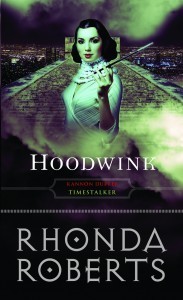 The other main reason is my life-long lust for anything remotely Noir. Even the word makes me shiver. Anyway, Hoodwink (Book 2 in the series) is when Kannon is hired for her first real investigation so I had to send her back to the era of the hard-boiled private eye… In 1939 all the private dicks (pun intended) were portrayed as male, so I really wanted to put Kannon through her paces with the boys.
The other main reason is my life-long lust for anything remotely Noir. Even the word makes me shiver. Anyway, Hoodwink (Book 2 in the series) is when Kannon is hired for her first real investigation so I had to send her back to the era of the hard-boiled private eye… In 1939 all the private dicks (pun intended) were portrayed as male, so I really wanted to put Kannon through her paces with the boys.
Basically Hoodwink gave me an excuse to have Kannon slink around decadent, old Hollywood with her dark glasses on and her black trench coat collar turned firmly up. It was a lot of fun to write. 
2. When we last did this Snapshot thing your first novel, Gladiatrix, had just been released. How has your life changed since then?
Everything’s pretty damn good. (I’m looking at my office ceiling and muttering, ‘Don’t anyone take that as a challenge!’) Gladiatrix was nominated for 3 awards: the Norma K. Hemming, the Davitt and the Ned Kelly for
best first novel – and the third book in the Timestalker series comes out in September this year.
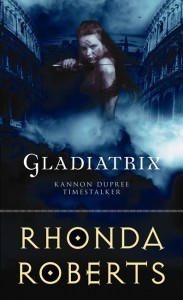 I’m happy living in the beautiful Illawarra, walking on the beach every day, doing my Chinese sword classes and occasionally looking up from my computer to drink in the view over the Escarpment cliffs and forest and then down to the rolling ocean.
I’m happy living in the beautiful Illawarra, walking on the beach every day, doing my Chinese sword classes and occasionally looking up from my computer to drink in the view over the Escarpment cliffs and forest and then down to the rolling ocean.
That’s all interspersed with doing field research for Books 4-6 in my series, which means regular travel to exotic places and the excuse to interview people who fascinate me. I feel very privileged.
3. What are you working on now – more Kannon? Where is she going next? Yep, definitely more Kannon. I’ve got the next three books (4-6) in the Timestalker series plotted out and I’m now knee deep in writing the fourth one. It’s going to be a ripper too.
In the third book, (the one due out in September 2012), Kannon goes on a completely different kind of adventure to Hoodwink, in a completely different century – 1867. No scandal-ridden, twentieth century film sets, no noir detectives lurking in trench coats or pampered, psychotic Hollywood starlets in this one. Kannon goes undercover as a bounty hunter and gets down and dirty with lots of danger, mystery and full throttle action. Stay tuned to my news page in July-August for a lot more details of the next adventure.
4. What Australian works have you loved recently?
That’s such a tough question. We’re so lucky here, a tiny population with such a rich pool of talent. Every time I check the shelves I find something new that intrigues me.
Anything by Rowena Cory Daniells, Marianne de Pierres and Sean Williams, The Aurealis Award nominees for 2011 are full of talent and Kim Westwood’s excellent new book is setting everyone talking across genres, which is great.
5. Two years on from Aussiecon 4, (and the last Snapshot) what do you think are some of the biggest changes to the Australian Spec Fic scene?
Apart from anything else the changes to the industry are having a huge impact…bookstores closing down, the explosion in on-line venues and other new media for publication. It’s a whirlwind at the moment and that’s
affecting what’s seen and read and what readers are open to reading.
In general there’s more diversity, more genre bending and blending and more international sales. Interesting to see how it will all shake out. The scene could be completely different in a year or two.
 This interview was conducted as part of the 2012 Aussie Spec Fic Snapshot. In the lead up to Continuum 8 in Melbourne, we will be blogging interviews for Snapshot 2012 conducted by Alisa Krasnostein, Kathryn Linge, David McDonald, Helen Merrick, Ian Mond, Jason Nahrung, Alex Pierce, Tansy Rayner Roberts, Tehani Wessely and Sean Wright. To read the interviews hot off the press, check these blogs daily from June 1 to June 7, 2012.
This interview was conducted as part of the 2012 Aussie Spec Fic Snapshot. In the lead up to Continuum 8 in Melbourne, we will be blogging interviews for Snapshot 2012 conducted by Alisa Krasnostein, Kathryn Linge, David McDonald, Helen Merrick, Ian Mond, Jason Nahrung, Alex Pierce, Tansy Rayner Roberts, Tehani Wessely and Sean Wright. To read the interviews hot off the press, check these blogs daily from June 1 to June 7, 2012.
You can find the past three Snapshots at the following links: 2005, 2007 and 2010
June 2, 2012
Snapshot 2012: Deborah Biancotti
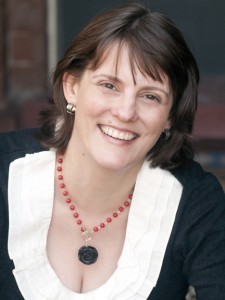 Deborah Biancotti writes & reads in Sydney. Her first collection, A BOOK OF ENDINGS, was shortlisted for the William L. Crawford Award for Best First Fantasy Book. Her first novella, “And the Dead Shall Outnumber the Living”, has been nominated for a Shirley Jackson Award. Her newest collection, BAD POWER, is available from Twelfth Planet Press. You can find Deborah online mostly just by Googling her.
Deborah Biancotti writes & reads in Sydney. Her first collection, A BOOK OF ENDINGS, was shortlisted for the William L. Crawford Award for Best First Fantasy Book. Her first novella, “And the Dead Shall Outnumber the Living”, has been nominated for a Shirley Jackson Award. Her newest collection, BAD POWER, is available from Twelfth Planet Press. You can find Deborah online mostly just by Googling her.
Check out Deborah’s previous Snapshots: 2005, 2007, 2010
1. Your major recent release is the collection Bad Power, which contains four linked stories about the sinister side of superpowers, and has been getting quite a bit of critical attention. So the question is – why do you hate superheroes?
I **love** superheroes. I fell in love with Spiderman as soon as I could read, & I think he set my benchmark for what a superhero is: someone who’s fundamentally good, but otherwise a bit of a screw-up. Batman was my second favourite (since, as kids, we’re more likely to rate these things as first & second, favourite & almost-favourite), & back in the day he didn’t have superpowers. He was just one helluva angry man who was learning to channel that for good. So, graphic novels have been questioning the ‘super’ aspects of superheroes – and, heck also the ‘heroic’ aspects – since I was a kid. More recently, though, we’ve seen WATCHMEN, X-MEN and IDENTITY CRISIS take up the theme more directly. Then television latched onto the idea in the noughties with HEROES, ALPHAS, and so on. And then came your oddly-powerful but-in-no-particular-way-that-can-be-quantified (no radioactive spiders, for example) heroes like we find in HAVEN, based on a Stephen King book like so many good things are.
 So I had that bank of history to play with. And I guess when I started asking myself ‘what makes a superhero’, I couldn’t escape the cynical side of my brain that believes power corrupts. And if absolute power corrupts *absolutely*, what would a superpower do? Particularly if you’re the first. Particularly if there’s not a society set up to believe – or even deny – that there’s such a thing as ‘heroes’ or ‘powers’. In a world where you can be famous just for being famous, where individualism is treasured over clan, where ‘society’ is a word that compensates for a multiplicity of worlds and cultures and beliefs, where ‘hero’ is a label that’s usually used by the media and usually used to describe someone who’s died – what WOULD you do if you found yourself in possession of something strange and potentially divine?
So I had that bank of history to play with. And I guess when I started asking myself ‘what makes a superhero’, I couldn’t escape the cynical side of my brain that believes power corrupts. And if absolute power corrupts *absolutely*, what would a superpower do? Particularly if you’re the first. Particularly if there’s not a society set up to believe – or even deny – that there’s such a thing as ‘heroes’ or ‘powers’. In a world where you can be famous just for being famous, where individualism is treasured over clan, where ‘society’ is a word that compensates for a multiplicity of worlds and cultures and beliefs, where ‘hero’ is a label that’s usually used by the media and usually used to describe someone who’s died – what WOULD you do if you found yourself in possession of something strange and potentially divine?
What would YOU do, gentle reader?
2. You have also had a novella published in Ishtar, along with Kaaron Warren and Cat Sparks. “And the Dead Shall Outnumber the Living” features a vengeful goddess leading an army of the dead against a mostly-contemporary Sydney. How much collaboration took place between the three of you, and why was this the Ishtar story that you in particular felt you had to tell?
We brainstormed Ishtar mythology for a while, & Kaaron awesomely shared her research (her research was way better than mine!) & then we agreed on starting/ending points. But after that we wrote largely individually. Ishtar had become the source of a personal relationship after the brainstorming & I think we all wanted to hold onto the ‘her’ we had fleshed out in our minds. I was pleased as punch to have the contemporary novella in the middle, because I had this experiment in mind which would be my love letter to my hometown of Sydney. Also it gave me an excuse to write in present tense, which I **love**, love, LOVE!
So I kinda went hell-for-leather in this evocation of Sydney that I wanted to build, & because I knew where the story had to end for the next novella, I knew I could put my protagonist through sheer hell to get there. I was smugly delighted when my protagonist, Detective Adrienne Garner, stared following in Ishtar’s footsteps, descending deeper & deeper into something dark & monstrous, losing her markers along the way – just as Ishtar lost clothing as she passed through the gates of hell. Ishtar ended up strung up on hooks in Hell for years until her uncle interceded. At which point she had to ascend again through the gates to find someone to take her place on the hooks. So she sent down her ex-lover down. Which is nice.
I wonder if we left Adrienne Garner on hooks for long enough, whether she’d come up with someone she’d like to send down in her place? I suspect she’s the kind of woman who might actually have a list ready for that sort of thing… 
3. I’ve noticed of late that your work feels heavily influenced by crime and police procedural type stories. Is there more of this coming? What are you working on right now?
 Yeah, I did something radical a few years back (she said, with irony) where I stopped reading all the books I ‘should’ be reading & started reading for pure pleasure. And I found myself returning to crime reading. I think I got bored with crime reading back in the nineties when it became trendy (which shows how desperately perverse I can be about this sort of thing) & kinda gave it up for a while. All the crime I was reading felt like more of the same. And then, years and years later, all the genre I was reading began to feel like it was ‘different’, but different in ways that were oddly predictable and annoyingly self-conscious. I thought, ‘hell, is anyone even telling a good STORY anymore?’
Yeah, I did something radical a few years back (she said, with irony) where I stopped reading all the books I ‘should’ be reading & started reading for pure pleasure. And I found myself returning to crime reading. I think I got bored with crime reading back in the nineties when it became trendy (which shows how desperately perverse I can be about this sort of thing) & kinda gave it up for a while. All the crime I was reading felt like more of the same. And then, years and years later, all the genre I was reading began to feel like it was ‘different’, but different in ways that were oddly predictable and annoyingly self-conscious. I thought, ‘hell, is anyone even telling a good STORY anymore?’
Right now I’m writing an SF thriller with a crime element. I figure maybe I am destined to move into the whole supernatural or SF crime / police procedural world, since I love them both the same. It’s like putting peanut butter in your icecream. At first it just seems like some kinda weird, decadent pairing. But then you realise something important about it. … It’s freaking delicious!
4. What Australian works have you loved recently?
As part of the Australian Women Writers Challenge of 2012, I’m reading outside my genres! So I’ve **LOVED* Shirley Hazzard with a fierce, familial passion. Um, but she’s probably not recent. I’ve loved Katharine Howell’s thrillers – set in Sydney, & featuring paramedics and cops. I just bought Honey Brown’s AFTER THE DARKNESS which I’m desperately looking forward to. I’ve also picked up some more Janet Frame books, which I’m frightened of reading (her AN ITEM FROM THE LATE NEWS was one of the most shocking & depressing & accurate portrayals of small town life I read in a decade – no, wait, several decades). I’m also stocking up on the Twelve Planets, of course, & looking forward to the Australian Years Best from Ticonderoga. And I just finished Anita Heiss’s AM I BLACK ENOUGH FOR YOU?, which is a warm, touching, surprising memoir – though from the title you’d think you’re in for an arse-kicking. ;p
5. Two years on from Aussiecon 4, (and the last Snapshot) what do you think are some of the biggest changes to the Australian Spec Fic scene?
It could be just me, but I’m seeing a lot more diversity in the scene, a lot more individual voices, a lot more projects happening. It feels like a groundswell, like something expanding in all directions at once. Which is kinda brilliant, actually!
 This interview was conducted as part of the 2012 Aussie Spec Fic Snapshot. In the lead up to Continuum 8 in Melbourne, we will be blogging interviews for Snapshot 2012 conducted by Alisa Krasnostein, Kathryn Linge, David McDonald, Helen Merrick, Ian Mond, Jason Nahrung, Alex Pierce, Tansy Rayner Roberts, Tehani Wessely and Sean Wright. To read the interviews hot off the press, check these blogs daily from June 1 to June 7, 2012.
This interview was conducted as part of the 2012 Aussie Spec Fic Snapshot. In the lead up to Continuum 8 in Melbourne, we will be blogging interviews for Snapshot 2012 conducted by Alisa Krasnostein, Kathryn Linge, David McDonald, Helen Merrick, Ian Mond, Jason Nahrung, Alex Pierce, Tansy Rayner Roberts, Tehani Wessely and Sean Wright. To read the interviews hot off the press, check these blogs daily from June 1 to June 7, 2012.
You can find the past three Snapshots at the following links: 2005, 2007 and 2010
Snapshot 2012: Narrelle M Harris
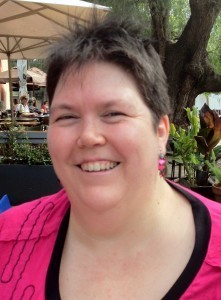 Narrelle M Harris is a Melbourne-based writer. Her book, The Opposite of Life, is a vampire novel set in Melbourne. In March 2012, her short story collection, Showtime, became the fifth of the 12 Planets series (released by World Fantasy Award winning Twelfth Planet Press). Walking Shadows, the sequel to The Opposite of Life, is due for release by Clan Destine Press in June 2012.
Narrelle M Harris is a Melbourne-based writer. Her book, The Opposite of Life, is a vampire novel set in Melbourne. In March 2012, her short story collection, Showtime, became the fifth of the 12 Planets series (released by World Fantasy Award winning Twelfth Planet Press). Walking Shadows, the sequel to The Opposite of Life, is due for release by Clan Destine Press in June 2012.
Narrelle also writes in the business sector. She created the Melbourne Literary iPhone app in association with Sutro Media. Her second app in partnership with Sutro, Melbourne Peculiar, was released in May 2012. You can find out more about the apps at www.iwriter.com.au/apps.
Find out more about Narrelle’s work at her website, www.narrellemharris.com, and her blog, www.mortalwords.com.au.
You can read Narrelle’s 2010 Snapshot here.
1. Let’s talk about Showtime! Four stories which dance between a light comic touch and dark, macabre horror. What do you think this collection says about you as a writer?
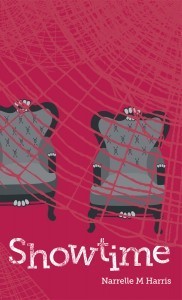 That I have a slightly disturbing sense of humour?
That I have a slightly disturbing sense of humour?
I’m certainly interested in exploring regular people who remain regular people even in extraordinary circumstances. They may find the best or worst in themselves, but they remain very human. I like to use paranormal ideas to push boundaries and explore relationships. I think flawed, fragile, very human human beings are the most fascinating thing in the universe.
So I guess I hope that people see that I like to explore the potential of being human with a bit of twisted humour but with some kind of truth in it, too.
2. I believe (please correct me if I’m wrong) that your debut novel The Opposite of Life is about to get a new lease of life with a different publisher, and there’s a sequel on the way too. So what Lissa and Gary goodness can we look forward to?
Actually, The Opposite of Life was my fourth published book. Its sequel, Walking Shadows, coming out in June, will be my sixth, and it’s that book that’s with a new publisher, Clan Destine Press.
I don’t want to give any spoilers for TOoL, but there’s a particular event at the end of that which is a bit of a subtle game-changer, so Walking Shadows explores that idea. There are new challenges as well, with a vampire slayer showing up in Melbourne. Gary and Lissa really aren’t superhero types and mostly they try to stay out of harm’s way, but harm keeps going out of its way to find them.
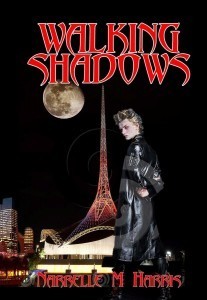 So this book sees them both exploring their own lives, and trying to be more engaged with life and who they want to be, despite the sometimes harrowing difficulties. Their friendship has become deeper, which gives them both more to lose, but more to gain as well. They still have things to learn about each other, potentially damaging secrets, and they have to be more honest with themselves and make some choices.
So this book sees them both exploring their own lives, and trying to be more engaged with life and who they want to be, despite the sometimes harrowing difficulties. Their friendship has become deeper, which gives them both more to lose, but more to gain as well. They still have things to learn about each other, potentially damaging secrets, and they have to be more honest with themselves and make some choices.
There’s the usual Lissa snark, Gary being a bit clueless, the old vampires Magdalene and Mundy being scary, and a single minded new vampire being pretty darned creepy. There’s romance, comedy, kidnapping, blood, mayhem, running for their lives and the occasional game of billiards.
3. What are you working on right now?
Now that Walking Shadows, the sequel to The Opposite of Life, is coming out in June, I’m back to work on the third book of that series. I have a bit of cultural research to do on that, actually, and I’m poking at the plot with a stick to see what stirs. I wish I were more devious and cunning, in terms of plotting, but what I lack in twistiness I try to make up for with black humour.
4. What Australian works have you loved recently?
After years of being deeply, deeply unimpressed with the romance genre, I’ve discovered Anne Gracie, whose work is funny and fresh and delightful.
I remain a huge fan of Mary Borsellino’s work – her last book, The Devil’s Mixtape, has some challenging concepts but her writing is so filled with sharp observation and deep compassion, and her themes and story threads are so complex and beautifully interwoven that she’s always a joy to read. Her vampire series, The Wolf House, has just been re-released by Omnium Gatherum, and I recommend those as well.
Lucy Sussex is always amazing in what she does, and I loved her collection, Matilda Told Such Dreadful Lies. My Lady Tongue remains one of the most vibrant, funny and intellectually sharp SF stories I’ve ever read.
I really enjoyed Alison Croggon’s The Gift, too. I intend to read the rest of the series when I’ve caught up on some of the giant pile of books I’ve bought recently.
5. Two years on from Aussiecon 4, (and the last Snapshot) what do you think are some of the biggest changes to the Australian Spec Fic scene?
We’ve got such a thriving small and independent press scene, doing such interesting, exciting work. That’s been brilliant to see.
I think we’re starting to realise here that we’re not that interested in single-concept genres either. So many writers are turning out to be hard to categorise because they create hybrid genres. Maybe it’s a function of the social history of this country. From the 18th century on, everyone comes from somewhere else, and we have this unsettled relationship with the original inhabitants of this country and with the land. We’re a massive hybrid of cultures, concepts and approaches, and in terms of nationhood, still so very young. Maybe our writers don’t want to be just one thing, but want to play around with all the things we are and can be.
That sounds a bit wanky now I’ve written it down. I’m not a social historian, I haven’t a clue. But it seems true that Australian spec fic writers are collecting ideas and approaches from a dozen places at once and managing to smoosh them together in interesting and creative ways. I hope that bodes well for the country as a whole. Writers are meant to be a culture’s storytellers, aren’t they, so that we know who we were, who we are and who we want to be?
 This interview was conducted as part of the 2012 Aussie Spec Fic Snapshot. In the lead up to Continuum 8 in Melbourne, we will be blogging interviews for Snapshot 2012 conducted by Alisa Krasnostein, Kathryn Linge, David McDonald, Helen Merrick, Ian Mond, Jason Nahrung, Alex Pierce, Tansy Rayner Roberts, Tehani Wessely and Sean Wright. To read the interviews hot off the press, check these blogs daily from June 1 to June 7, 2012.
This interview was conducted as part of the 2012 Aussie Spec Fic Snapshot. In the lead up to Continuum 8 in Melbourne, we will be blogging interviews for Snapshot 2012 conducted by Alisa Krasnostein, Kathryn Linge, David McDonald, Helen Merrick, Ian Mond, Jason Nahrung, Alex Pierce, Tansy Rayner Roberts, Tehani Wessely and Sean Wright. To read the interviews hot off the press, check these blogs daily from June 1 to June 7, 2012.
You can find the past three Snapshots at the following links: 2005, 2007 and 2010
June 1, 2012
Snapshot 2012: Kathleen Jennings
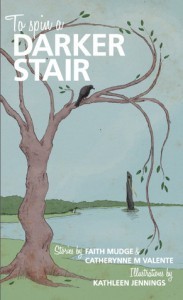 Kathleen Jennings is an illustrator and writer based in Brisbane, Australia. Her recent short comic “Finishing School” was nominated for the Aurealis Awards for Best YA Short Story, and for the Ditmar for Best Artwork (along with her cover for Delia Sherman’s The Freedom Maze). You can see examples of her work, especially the gorgeous fan series The Dalek Game, at her website.
Kathleen Jennings is an illustrator and writer based in Brisbane, Australia. Her recent short comic “Finishing School” was nominated for the Aurealis Awards for Best YA Short Story, and for the Ditmar for Best Artwork (along with her cover for Delia Sherman’s The Freedom Maze). You can see examples of her work, especially the gorgeous fan series The Dalek Game, at her website.
Check out Kathleen’s 2010 Snapshot here.
1. Kathleen, you’re rapidly becoming known as both a professional and fan artist in the Australian (and international!) spec fic field – from your blog with the running series ‘The Dalek Game’ to your pro work with Small Beer Press, and all manner of projects in between. You’ve even been drawing portraits of Australian spec fic writers! What have been some of the most fun and exciting artistic challenges of the last few years?
Oh, everything! I learn in bounds from each project and I love them all, from the ones I complain and agonize over for months (90% of the work is angst) to the last-minute requests for emergency llamas. It’s all a bit surreal, but I like being the woman to call when you need a llama.
I like putting dream jobs or collaborations on my wishlist and having them come true – getting to work with Small Beer Press to the point that I don’t fall off my chair when I get an email from them (I did the first time), having my nagging pay off when I want to try a new technique on a project, getting away with some terrible little private jokes in the background and pictures of “Finishing School”. Even being asked to submit for Steampunk! Being introduced as “this is Kathleen – she draws Daleks!” and having people say, “What’s a Dalek?”. Being asked to design a wedding invitation with Daleks on it. The back-and-forth with art directors, whether at publishers or lurking in their lairs. Getting to illustrate a Catherynne Valente story!
2. Speaking of which, you recently worked on the cover and illustrations for a Valente story with Fablecroft Publishing and To Spin A Darker Stair. What was most challenging for you about the project, and are you pleased with the results?
Catherynne Valente and Faith Mudge 
The most challenging aspect was coming up with a single cover image that would suit both stories – the subjects and moods – and not prefer one to the other. I gave Tehani about ten thumbnail sketches, and the final image wasn’t one of them! A full collection is a lot easier. I am happy with the result, because the image is very obviously a fairytale one, but doesn’t (I hope!) give any plots away.
I thought the internal illustrations would be simpler, because I got to do two for each story, but I hit a snag on my technique there – I’m happy with them as far as I could go with the particular technique I used at the time (and I love the staircase in the first illustration) but I’ve adapted my process since then and I think I’m getting freer handed. But that’s always the way – I learn so much on every project. I have to squint sideways to look at some of the line work in “Finishing School” now!
3. What projects can we look forward to see from you next – both as an artist and as a writer?
Hah. I hate opening my mouth about new projects, just in case! Or maybe I just enjoy dropping cryptic hints. As I write this, I’m putting the final touches on a cover and internal spot illustrations for an Australian children’s fantasy novel, and drawing thumbnail sketches for covers of several very different upcoming novels, featuring smiths and submarines, cities and woodcuts and tornadoes. I’ve also done one of my favourite covers for a reissue of an important collection of stories and it is really hard keeping my mouth shut, because I want to hold it up and say, “Look what I nagged them into letting me get away with! Isn’t it pretty?”
I have a few short stories which are finding their way out into the world (sometimes after torture by evil Doctors) and a Large Amorphous Manuscript which I pull out and edit whenever I wish to taste of despair. I’m conscious of how much time writing (or at least editing) needs as opposed to illustration, so I’m taking steps to keep them balanced. I have to be deliberate, because I also have a full-time office job, and because writing and drawing blend in my mind – almost all my drawings form part of a story (in my head or otherwise), and my writing notes and drafts often include sketches.
And after saying I never wanted to LOOK at another comic again after nearly getting heat stroke while completing “Finishing School”, I’m working on another piece. I had the brilliant idea of trying to integrate a parlour game with the plot and it’s like trying to solve a Rubik’s cube, so we’ll see how that goes.
 4. What Australian works have you loved recently?
4. What Australian works have you loved recently?
I don’t like leaving anyone out, so I’ll only admit to several unpublished stories by Angela Slatter and Lisa Hannett, which are pure magic. I want to draw the obscure hints and details in the corners of them but they have Other Plans and won’t let me. Yet. But watch out for that when it’s published!
5. Two years on from Aussiecon 4 and our last Snaphot, what has changed most for you?
I’ve been taking this seriously, if quietly, for a while and I don’t notice things changing. But then I put my head up and realise how much landscape has gone by. I know so many more people and have had the opportunity to work with authors and editors I never expected to – and more than once! People know me, and aren’t too startled when I drag them off to have coffee. There are instances of reciprocal fannishness which is… weird, but very cool. People get excited about idle daydream projects. So it’s as if I was allowed to take all the best bits of two years ago, and then they were made even better.
 This interview was conducted as part of the 2012 Aussie Spec Fic Snapshot. In the lead up to Continuum 8 in Melbourne, we will be blogging interviews for Snapshot 2012 conducted by Alisa Krasnostein, Kathryn Linge, David McDonald, Helen Merrick, Ian Mond, Jason Nahrung, Alex Pierce, Tansy Rayner Roberts, Tehani Wessely and Sean Wright. To read the interviews hot off the press, check these blogs daily from June 1 to June 7, 2012.
This interview was conducted as part of the 2012 Aussie Spec Fic Snapshot. In the lead up to Continuum 8 in Melbourne, we will be blogging interviews for Snapshot 2012 conducted by Alisa Krasnostein, Kathryn Linge, David McDonald, Helen Merrick, Ian Mond, Jason Nahrung, Alex Pierce, Tansy Rayner Roberts, Tehani Wessely and Sean Wright. To read the interviews hot off the press, check these blogs daily from June 1 to June 7, 2012.
You can find the past three Snapshots at the following links: 2005, 2007 and 2010
May 31, 2012
Friday Links Explains Steampunk
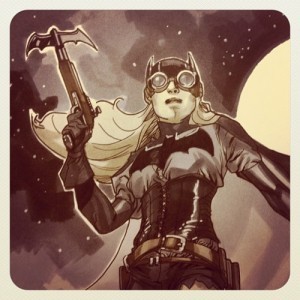 A little one this week cos so much reading to come with the Snapshot upon us!
A little one this week cos so much reading to come with the Snapshot upon us!
I loved this surreal Questionable Content page, which I think probably sums up many bewildered people’s thoughts on steampunk!
This one was sent Galactic Suburbia’s way – about why so many film critics may well have not noticed the important role & contribution of Black Widow to the Avenger’s film. She’s the gorilla in the room!
An interview with Jimmy Palmiotti and Justin Gray about their new project (WITH Amanda Conner) a series of online-only comics based on a bunch of anime statues of DC super heroines. I’m so excited to read their Wonder Woman.
Ticonderoga have released the table of contents for their Year’s Best Australian Fantasy & Horror – not only am I there with the Patrician, but it’s a great looking list in itself, reflecting a broad variety of Aussie authors & publications. Good stuff.
Fablecroft is doing a GoodRead giveaway of Epilogue, the anthology about what happens after the apocalypse – out now and featuring a short story of mine!
Utterly self-indulgent, but my local vintage Japanese textiles shop (the place I go to stock up on kimono scraps, ah the necessities of life) now has an online shop! Crafty people may be keen to check it out.
One of my favourite OodCast songs of all time is now a music video! Check it out.
Announcing the 2012 Aussie Spec Fic Snapshot
The Aussie Spec Fic Snapshot has taken place three times over the past eight years. In 2005, Ben Peek spent a frantic week interviewing 43 people in the Australian spec fic scene, and since then, it’s grown every time, now taking a team of interviewers working together to accomplish! In the lead up to Continuum 8 in Melbourne, we will be blogging interviews for Snapshot 2012 conducted by Alisa Krasnostein, Kathryn Linge, David McDonald, Helen Merrick, Ian Mond, Jason Nahrung, Alex Pierce, Tansy Rayner Roberts, Tehani Wessely and Sean Wright. To read the interviews hot off the press, check these blogs daily from June 1 to June 7, 2012.
As we celebrate the breadth and depth of the Australian spec fic scene, 2012 Snapshot is also a bittersweet time and we take the opportunity to remember two well-loved members of the community who sadly passed away in the past year; Paul Haines and Sara Douglass.
In honour of their memory, the first two snapshots are:
A tribute to Paul Haines <http://wp.me/p1D3h2-zI>
A tribute to Sara Douglass <http://wp.me/poBw7-Hm>

